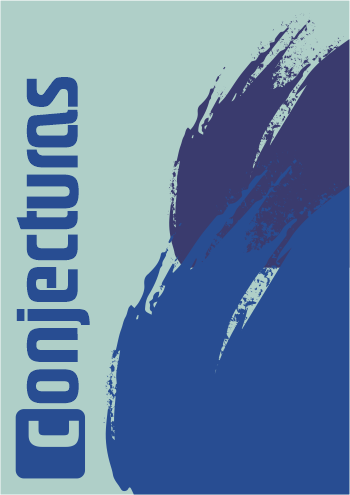Influência de parâmetros de electrospinning sobre a morfologia e performance de meios filtrantes
DOI:
https://doi.org/10.53660/CONJ-1449-2A09Palavras-chave:
Electrospinning verde, Filtração de Ar, Nanofibras, Nanopartículas, Controle de Poluição do ArResumo
Meios filtrantes de nanofibras usados na filtração de nanopartículas dispersas em ar podem ser confeccionados por electrospinning de soluções poliméricas. No entanto, este processo está condicionado à influência de inúmeras variáveis operacionais, incluindo condições de alimentação das soluções. Neste trabalho, foi realizado um planejamento fatorial 2³ para avaliar a influência de variáveis do electrospinning sobre características morfológicas e de performance de meios filtrantes de nanofibras de álcool polivinílico (PVA). As variáveis consideradas foram a distância agulha-coletor, a velocidade de rotação do coletor e o tempo de fiação. As variáveis dependentes foram a mediana e o desvio padrão geométrico da distribuição de diâmetro de fibras, a eficiência global de coleta de partículas de NaCl (5,94–224,7 nm) e a queda de pressão inicial. Verificou-se que a distância agulha-coletor foi o parâmetro que afetou mais significativamente as variáveis-resposta, especialmente a mediana e a queda de pressão inicial, cujas curvas de ajuste forneceram valores de coeficientes de determinação (R²) de 0,98 e 0,96, respectivamente.
Downloads
Referências
BOLTO, B.; TRAN, T.; HOANG, M.; XIE, Z. Crosslinked poly(vinyl alcohol) membranes. Progress in Polymer Science, vol. 34, p. 969 – 981, 2009. https://doi.org/10.1016/j.progpolymsci.2009.05.003.
CAO, D.; SHI, Y.; FU, Z.; LI, X.; YANG, L.; YAN, D. Controllable fabrication of micro/nanostructures by electrospinning from polystyrene/poly(vinyl alcohol) emulsion dispersions. Journal of Applied Polymer Science, vol. 135, n. 26, 46288, 2018. https://doi.org/10.1002/app.46288.
HINDS, C. W. Aerosol Technology: Properties, Behaviour, and Measurement of Airborne Particles, 2ª ed. New York: John Wiley, 1998.
LÓPEZ-CÓRDOBA, A.; CASTRO, G. R.; GOYANES, S. A simple green route to obtain poly(vinyl alcohol) electrospun mats with improved water stability for use as potential carriers of drugs. Materials Science and Engineering C, vol. 69, p. 726 – 732, 2016. https://doi.org/10.1016/j.msec.2016.07.058.
MEDEIROS, E. S.; MATTOSO, L. H. C.; ITO, E. N.; GREGORSKI, K. S.; ROBERTSON, G. H.; OFFEMAN, R. D.; WOOD, D. F.; ORTS, W. J.; IMAM, S. H. Electrospun Nanofibers of Poly(vinyl alcohol) Reinforced with Cellulose Nanofibrils. Journal of Biobased Materials and Bioenergy, vol. 2, n. 3, p. 231 – 242, 2008. https://doi.org/10.1166/jbmb.2008.411.
MONTGOMERY, D. C.; RUNGER, G. C. Applied statistics and probability for engineers. 6ª ed. Hoboken: Wiley, 2014.
OLIVEIRA, A. E.; AGUIAR, M. L.; GUERRA, V. G. Theoretical Analysis of Air Filtration Phenomena for a Micro-Fibrous Filter Medium Enhanced with Electrospun Nanofibres. Aerosol Science and Engineering, vol. 5, p. 81–92, 2021. https://doi.org/10.1007/s41810-020-00086-y.
OLIVEIRA, A. E.; BONFIM, D. P. F.; SALUSSOGLIA, A. I. P.; MEDEIROS, G. B.; GUERRA, V. G.; AGUIAR, M. L. Nanofiber Production Techniques Applied to Filtration Processes. In: HUSSAIN, C. M.; COSTA, G. M. Environmental, Ethical, and Economical Issues of Nanotechnology. New York: Jenny Stanford, 2022. p. 31–60. https://doi.org/10.1201/9781003261858-2.
RAMAKRISHNA, S.; FUJIHARA, K.; TEO, W.-E-.; LIM, T.-C.; MA, Z. Electrospinning Process. In: ______. An Introduction to Electrospinning and Nanofibers. New Jersey: World Scientific. Hoboken: John Wiley & Sons, 2005. p. 90 – 154.
RASBAND, W. S. ImageJ. U. S. National Institutes of Health, Bethesda, Maryland, USA, <https://imagej.nih.gov/ij/>, 1997-2022.
SHI, J.; YANG, E. Green electrospinning and crosslinking of polyvinyl alcohol/ citric acid. Journal of Nanoparticle Research, vol. 32, p. 32 – 42, 2015. https://doi.org/10.4028/www.scientific.net/JNanoR.32.32.
TAN, Z. Air Pollution and Greenhouse Gases: From Basic Concepts to Engineering Applications for Air Emission Control. Singapore: Springer, 2014.
TONG, H.-W.; WANG, M. Electrospinning of fibrous polymer scaffolds using positive voltage or negative voltage: a comparative study. Biomedical Materials, vol. 5, 054110, 2010. https://doi.org/10.1088/1748-6041/5/5/054110.
YARIN, A. L.; POURDEYHIMI, B.; RAMAKRISHNA, S. General quasi-one-dimensional equations of dynamics of free liquid jets, capillary and bending instability. In: ______. Fundamentals and Applications of Micro- and Nanofibers. New York: Cambridge University Press, 2014. p. 63 – 88.
ZAKARIA, S. M.; ZEIN, S. H. S.; OTHMAN, M. R.; JANSEN, J. A. Hydroxyapatite nanoparticles: Electrospinning and calcination of hydroxyapatite/polyvinyl butyral nanofibers and growth kinetics. Journal of Biomedical Materials Research, vol. 101A, p. 1977 – 1985, 2012. https://doi.org/10.1002/jbm.a.34506.
ZHU, M.; HUA, D.; PAN, H.; WANG, F.; MANSHIAN, B.; SOENEN, S. J.; XIONG, R.; HUANG, C. Green electrospun and crosslinked poly(vinyl alcohol)/poly(acrylic acid) composite membranes for antibacterial effective air filtration. Journal of Colloid and Interface Science, vol. 511, p. 411 – 423, 2018. https://doi.org/10.1016/j.jcis.2017.09.101.
Downloads
Publicado
Como Citar
Edição
Seção
Licença
Copyright (c) 2022 Conjecturas

Este trabalho está licenciado sob uma licença Creative Commons Attribution 4.0 International License.



